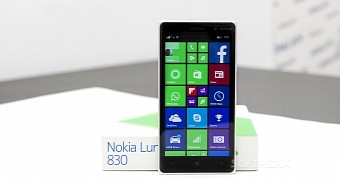Microsoft has recently presented the Lumia 950 and Lumia 950 XL, both of which are the company's latest competitors on the high-end phone market and supposed to compete against rivals such as Samsung Galaxy S6, Note 5, and iPhone 6s/6s Plus.
But while the company is working hard to become more relevant on the phone hardware, Microsoft watchers still don't believe it has what it takes to gain market share and compete against its rivals running Android and iOS.
“We continue to be skeptical about Microsoft’s ability to take meaningful smartphone share,” Cowen analyst Gregg Moskowitz says in a note to investors.
And while Moskowitz hasn't explained why exactly he believes that Microsoft is far from becoming a rival to Android and iOS, the majority of users out there who previously owned a Windows Phone believe that Windows 10 Mobile is a step in the right direction as far as the mobile efforts of the Redmond-based software giant are concerned.
Continuum for the win
There's no doubt that Continuum, the feature that Microsoft introduced with much fanfare earlier this year, and allows users to connect a Windows phone to a monitor or projector screen and transform it into a fully-featured computer, will make a difference.
Continuum mirrors the phone screen on the monitor and allows you to work on it just like on a regular PC, with all files to be saved on the handset. The whole feature is based on the concept of universal apps, which allows programs to scale to different screen sizes and provide a similar look and feel on all devices.
Certainly, the new Lumias are expected to refresh Microsoft's mobile efforts, but it takes more than that to become a successful player on such a challenging market. Several other Windows 10 Mobile devices are on their way, but Redmond also needs help from partners, who must come with their own devices, to expand this new ecosystem and boost customer appeal.

 14 DAY TRIAL //
14 DAY TRIAL //